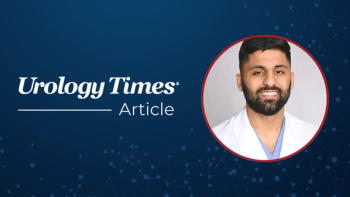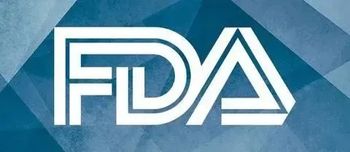
Consider Choice E: Effective learning during residency
Urology resident, Nirmish Singla, MD, goes over some of the ways urologists can stay educated and informed in the infinite and dynamic curriculum that defines the medical field.
As physicians, we are well-acquainted with taking examinations throughout our lives. The process begins as early as high school with college admission tests (SAT, ACT) and continues through each phase of our education and training process, including the MCAT, countless exams throughout medical school, and (for allopathic students graduating in the U.S.) the USMLE step I, II (CK, CS), and III exams. Throughout the schooling process, we devise approaches to study effectively and continue to refine these methods on an individualized basis to perfect the art of selecting the most attractive option out of five for each multiple-choice question we encounter.
The process, however, does not end simply with completing the medical degree. In residency (and some fellowships), annual in-service exams are required, followed eventually by the culmination of board certification exams, which often include a separate written and oral component for many surgical specialties. This may be followed still by periodic recertification exams throughout one’s career.
More from Dr. Singla -
The transition that occurs in medical school between the preclinical and clinical years of training often signifies a challenge on multiple levels. Aside from the obvious change in expectations and the shift to a more pragmatic learning environment, we are forced to continue to study and acquire knowledge despite the demanding clinical schedule-indeed, a radical change from the more regimented, traditional, lecture-based approach that got us so far in our careers. We become exposed to and humbled by the infinite and dynamic curriculum that defines the medical field.
The transition usually entails a struggle of redefining the way we approach learning and determining how to utilize the overwhelming resources available. Nonetheless, it is a necessary transition for any physician, as it sets the precedent for lifelong learning.
Residency itself poses a tricky challenge, particularly in a specialty area such as urology. Aside from fundamental reading performed during elective sub-internships, the coverage of urologic topics in the standard medical school curriculum is often limited. As a result, many incoming urology residents are overwhelmed by discovering the extensive knowledge gap that must be filled prior to becoming a competent urologist (the latest edition of “Campbell-Walsh Urology” approaches nearly 4,000 pages), not to mention the steep learning curve associated with operating and performing procedures skillfully, answering consults effectively, and counseling patients based on the latest research in our field. As a member of the AUA National Medical Student Curriculum (NMSC) Committee, I encourage the younger audience to explore our ongoing multimodal efforts to standardize and augment the
In case you missed it:
Our fund of urologic knowledge is objectively evaluated every November with the annual resident in-service examination (ISE) administered by the AUA. The intent of the ISE is to provide not only a means by which residency programs may evaluate residents, but also one by which residents may evaluate themselves and identify areas in need of improvement. As with many exams, the ISE can be anxiety provoking; however, with a strategic approach to learning throughout training, it needn’t be a source of stress. Just as a marathon runner’s preparation relies on more than a few days leading up to the big race, preparation for the ISE should be a year-round process of urologic learning from teaching conferences, patient encounters, operative cases, practice questions, and independent reading. Reading about patients. Reading from textbooks. Reading from journal articles.
I recall the sage advice that my former internal medicine clerkship director would constantly reinforce in medical school: read something, anything, every day, even after a long, tiring day in the hospital. Self-directed learning is essential and should become habitual for any member of the medical profession. The goal of learning should not simply be for the exams alone, but rather for a genuine understanding that will translate into effective patient care. Instead of simply reading in a linear fashion, it is important to clinically contextualize what we learn and to think critically about the problems we encounter daily to solidify our fund of knowledge.
“Medicine lies buried in the textbooks and lives in the journals,” the late, world-renowned cardiac and vascular surgeon Harris B. Shumacker, Jr., MD, stated wisely. This statement-passed down to me by one of my own mentors, Arthur Sagalowsky, MD-behooves us to continually revise our understanding of an incredibly dynamic field by appreciating the latest literature. With the increasing use of multimedia in the distribution of information, the number of resources available to expand our fundamental knowledge base and prepare for examinations continues to grow and supplement “Campbell-Walsh Urology.” The resultant benefit is the ability to cater to the substantial heterogeneity in learning styles among residents while enabling real-time updates. In fact, at the end of the ISE, there is a multiple-choice survey question that inquires which resources were utilized in preparation for the exam, many of which are offered directly by the AUA itself (nicely consolidated on the
Practice questions are certainly high yield in my opinion, and the AUA makes available a new set of 150 Self-Assessment Study Program questions every year, which closely resemble the style of the actual ISE and provide full explanations for each answer with references. The dynamic AUA Core Curriculum, which has undergone significant revisions over the last couple of years, is a helpful, comprehensive online resource written by the leaders in our field that offers easy-to-read, condensed information augmented by high-quality figures, videos, and key references. An application has even been developed for easy reference to the core curriculum on mobile devices.
Frequent review of the AUA guidelines, white papers, best practice statements, and policy statements (also available as a mobile application) is certainly crucial for both examination and pragmatic purposes. Staying abreast of contemporary literature is an important habit to adopt, and the AUA Update Series conveniently reviews the latest high-impact data for 40 urologic topics per year in a self-study continuing medical education format. Other formats of learning are also available, including the AUA’s online case study modules and its new podcast series for auditory learners. For those preferring a lecture-based approach, the AUA annual board review course provides a comprehensive, high-yield option.
Next:
Other books that may be worth exploring during residency include Jeff Weider, MD’s “Pocket Guide to Urology” (or another similar such pocket guide for quick reference), Stephen Leslie, MD’s “Urology Board Review Pearls of Wisdom” (an open-ended Q&A-based format), and Samir Taneja, MD’s “Complications of Urologic Surgery” (for anticipating and troubleshooting when things do not proceed as planned in the operating room). A good surgical atlas is critical to have for case preparation, along with access to surgical videos. While the aforementioned list is by no means exhaustive-there are indeed countless other textbooks, mobile applications, and websites-additional educational resources and forums can be found at
Have you read:
It is easy to become quickly overwhelmed and inundated by the resources available-and it is not a requisite to read every resource either. Rather, it is important to first identify one’s own learning style and be resourceful and accommodating in the approach to studying. It is also important to remember that at the end of the day, the overarching goal-beyond the numeric scores of our endless multiple-choice exams-is to become good clinicians and to prioritize the best interests of our patients when practicing urology.
As a concluding exercise, let us end with another question: In clinical practice, when faced with a problem, which of the following is true?
A) We may not always know the right answer.
B) There may not always be a right answer.
C) There may be more than one right answer.
D) The right answer for one patient may differ for another identical patient.
E) All of the above.
(Hint: Consider choice E.)
More from Urology Times:
Newsletter
Stay current with the latest urology news and practice-changing insights — sign up now for the essential updates every urologist needs.


















